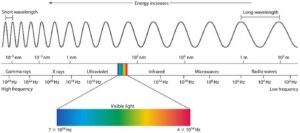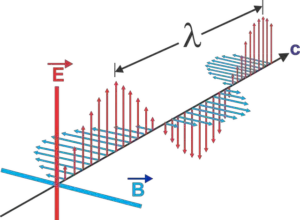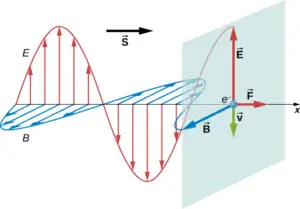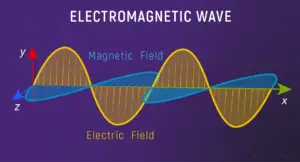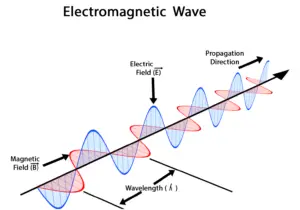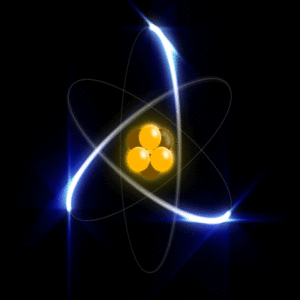The year was 1888, and a young physicist by the name of Heinrich Hertz was about to embark on a groundbreaking experiment that would forever change the course of science and technology. Armed with nothing but a spark gap oscillator and a loop antenna, Hertz set out to prove the existence of electromagnetic waves – waves that were believed to exist but had never been directly observed.

What followed was a series of ingenious experiments that demonstrated the properties of these mysterious waves and paved the way for the development of modern communication technologies such as radio, television, and wireless internet. In this article, we will dive into Hertz’s pioneering experiment and uncover the secrets of the electromagnetic spectrum.
What is the Hertz experiment for producing and detecting electromagnetic waves?
The Hertz experiment was a series of experiments conducted by German physicist Heinrich Hertz in the late 1800s aimed at producing and detecting electromagnetic waves. Hertz’s experiment involved using a spark gap oscillator to create high-frequency electromagnetic waves, which were then transmitted through space and detected by a receiver.
Hertz was able to demonstrate that the electromagnetic waves he produced were the same as light waves, with the same properties such as reflection, refraction, and interference. Hertz’s experiments helped to confirm the existence of electromagnetic waves and paved the way for the development of wireless communication technology.
Hertz’s experiment electromagnetic waves construction diagram
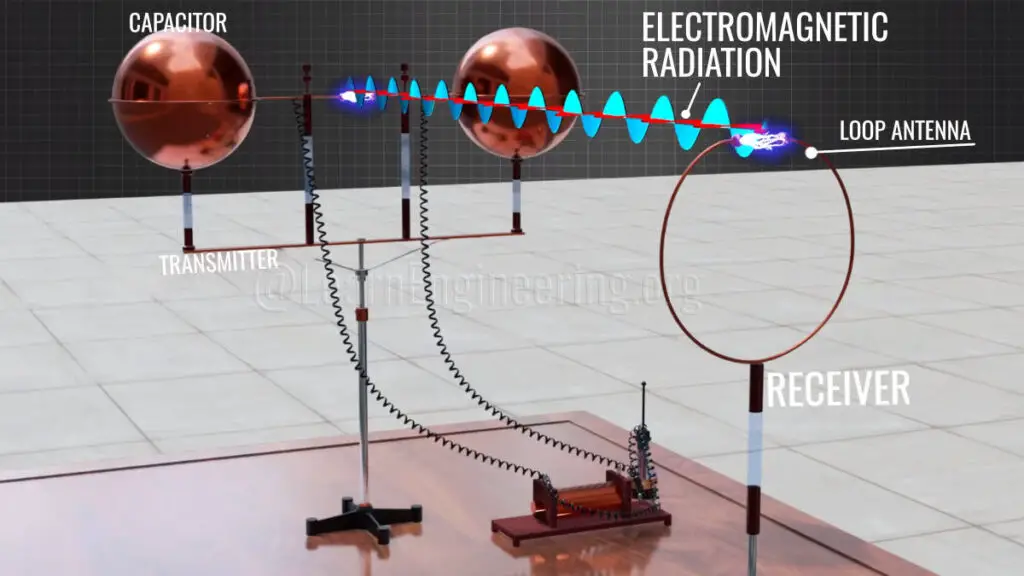
In this construction diagram, the spark gap oscillator is shown on the left, and the loop antenna and detector are shown on the right. The spark gap oscillator produces high-frequency electromagnetic waves, which are transmitted through space and received by the loop antenna. The detector is able to detect the tiny currents induced in the antenna by the electromagnetic waves, allowing Hertz to demonstrate the properties of these waves.
The diagram for Hertz’s experiment consists of three main components: a spark gap oscillator, a transmitting antenna, and a receiving antenna. Here is a breakdown of each component:
- Spark Gap Oscillator: The spark gap oscillator consists of two metal spheres separated by a small gap. When a high voltage is applied to the spheres, a spark jumps across the gap, creating a burst of electromagnetic radiation. In the diagram, the oscillator is connected to a high-voltage source.
- Transmitting Antenna: The transmitting antenna consists of a loop of wire connected to the spark gap oscillator. When the oscillator produces a burst of electromagnetic radiation, it induces a tiny current in the loop antenna, which then radiates the electromagnetic waves into space.
- Receiving Antenna: The receiving antenna consists of a similar loop of wire placed a short distance away from the transmitting antenna. When the electromagnetic waves produced by the transmitting antenna reach the receiving antenna, they induce a tiny current in the loop, which is then detected by a sensitive detector.
- Detector: The detector consists of a small metal sphere connected to two metal plates. When the current induced in the receiving antenna reaches the detector, it causes a spark to jump between the sphere and the plates, which can be seen and measured.
The construction diagram of Hertz’s experiment is relatively simple, but it required a high level of precision and attention to detail to achieve accurate results. The key components of the experiment were the spark gap oscillator, the transmitting and receiving antennas, and the sensitive detector, which together allowed Hertz to produce and detect electromagnetic waves and demonstrate their properties.
Read Also:
- Transformer – Definition, Types, Working Principle, and Constructions
- LC oscillation class 12
- Expression for energy and average power stored in a pure capacitor
- Electromagnetic waves: definition, equation, graphical representation, and applications
How does Hertz’s experiment work?
Heinrich Hertz’s experiment was designed to produce and detect electromagnetic waves in order to demonstrate their properties. Here is how the experiment works:
- Producing Electromagnetic Waves: Hertz used a spark gap oscillator to produce high-frequency electromagnetic waves. The oscillator consisted of two metal spheres separated by a small gap. When a high voltage was applied to the spheres, a spark would jump across the gap, creating a burst of electromagnetic radiation.
- Transmitting Electromagnetic Waves: Hertz placed a loop antenna a short distance away from the oscillator. The electromagnetic waves produced by the oscillator were transmitted through space and induced a tiny current in the loop antenna.
- Detecting Electromagnetic Waves: Hertz used a detector to measure the current induced in the loop antenna by the electromagnetic waves. The detector consisted of a small metal sphere connected to two metal plates. When the current induced in the loop antenna reached the detector, it caused a spark to jump between the sphere and the plates, which could be seen and measured.
- Demonstrating Electromagnetic Wave Properties: Hertz was able to demonstrate several properties of electromagnetic waves using this setup, such as their ability to travel through space at the speed of light, their reflection and refraction properties, and their ability to interfere with each other.
By producing and detecting electromagnetic waves in this way, Hertz was able to confirm their existence and demonstrate their properties, paving the way for the development of modern communication technologies.
Watch this video for more reference:
Properties of electromagnetic waves demonstrated by Hertz’s experiment
Heinrich Hertz’s experiment demonstrated several properties of electromagnetic waves, which helped confirm their existence and paved the way for the development of wireless communication technology. Here are some of the key properties of electromagnetic waves that Hertz demonstrated:
- Electromagnetic waves can be produced by an oscillating electric charge: Hertz used a spark gap oscillator to produce high-frequency electromagnetic waves.
- Electromagnetic waves travel through space at the speed of light: Hertz showed that the waves he produced traveled through space at the same speed as light.
- Electromagnetic waves have properties similar to those of light waves: Hertz showed that the electromagnetic waves he produced had properties such as reflection, refraction, and interference, which are also observed in light waves.
- Electromagnetic waves can be polarized: Hertz demonstrated that the electric and magnetic fields of the electromagnetic waves he produced could be oriented in specific directions.
- Electromagnetic waves can be detected by an antenna and a detector: Hertz used a loop antenna and a sensitive detector to detect the tiny currents induced in the antenna by the electromagnetic waves.
These properties of electromagnetic waves are now well-established and form the basis of modern communication technologies such as radio, television, and wireless internet.
Importance of Hertz’s experiment electromagnetic waves
The importance of Heinrich Hertz’s experiment cannot be overstated. This experiment was a critical step in the development of our understanding of electromagnetism and paved the way for many important technological advancements.
Here are some of the key reasons why Hertz’s experiment was so important:
- Confirmed the existence of electromagnetic waves: Hertz’s experiment provided conclusive evidence that electromagnetic waves, which had been predicted by James Clerk Maxwell, were a real phenomenon. This was a major breakthrough in the understanding of electromagnetism and demonstrated the power of theoretical physics in predicting real-world phenomena.
- Demonstrated the properties of electromagnetic waves: Through his experiments, Hertz was able to demonstrate several key properties of electromagnetic waves, such as their ability to travel through space at the speed of light, their reflection and refraction properties, and their ability to interfere with each other. This knowledge was essential for the development of technologies that rely on electromagnetic waves, such as radio, television, and wireless communication.
- Paved the way for modern communication technologies: Hertz’s experiments provided the foundation for the development of many important technologies that rely on electromagnetic waves, including radio, television, and wireless communication. Without Hertz’s experiments, these technologies may not have been possible.
- Inspired further research: Hertz’s experiments inspired a new era of research into electromagnetism and led to the development of many new technologies and applications. Hertz’s work has had a lasting impact on physics and engineering, and his legacy continues to inspire scientists and inventors today.
Hertz’s experiment was a major milestone in the development of our understanding of electromagnetism and its practical applications. The experiment helped to confirm the existence of electromagnetic waves, demonstrated their properties, and paved the way for the development of modern communication technologies that have transformed our world.
Read Also
- Faraday and henry’s experiments on electromagnetic induction
- Faraday’s laws of electromagnetic induction Class 12
- Displacement current class 12: definition, modification, formula, and properties
- Electromagnetic induction | definition, applications, and history
- Magnetic flux – definition, formula, units, and dimensions
What made hertz think that electromagnetic waves are transmitted during his experiment
Heinrich Hertz was able to infer that electromagnetic waves were being transmitted during his experiment by observing the behavior of the receiving antenna and the sensitive detector. When he applied a high voltage to the spark gap oscillator, a burst of electromagnetic radiation was produced which was then picked up by the transmitting antenna and radiated into space as electromagnetic waves.
Hertz then observed that when the electromagnetic waves reached the receiving antenna, they induced a tiny current in the loop, which was then detected by the sensitive detector. This suggested that electromagnetic waves were capable of inducing electric currents in conductive objects, which is one of the key properties of electromagnetic waves.
Hertz also observed other properties of electromagnetic waves, such as their ability to reflect and refract, and their interference patterns. By carefully measuring these properties, Hertz was able to conclude that electromagnetic waves were a real phenomenon and that they had many of the same properties as light waves.
Hertz’s experiment electromagnetic waves conclusion
Heinrich Hertz’s experiment helped to confirm the existence of electromagnetic waves and demonstrated several of their properties. Based on his experiments, Hertz drew several conclusions, including:
- Electromagnetic waves are produced by oscillating electric charges.
- Electromagnetic waves travel through space at the speed of light.
- Electromagnetic waves have properties similar to those of light waves, such as reflection, refraction, and interference.
- Electromagnetic waves can be polarized, meaning that their electric and magnetic fields can be oriented in specific directions.
- Electromagnetic waves can be detected by an antenna and a detector.
These conclusions were critical in the development of wireless communication technology and our understanding of the nature of light. Hertz’s experiments helped pave the way for further research into electromagnetism and led to the development of many important technologies, including radio, television, and wireless communication.
Read Also:
- Maxwell’s equations class 12: integral form, differential form, applications, and explanation
- Displacement current class 12: definition, modification, formula, and properties
- Electromagnetic waves class 12: definition, equation, graphical representation, and applications
- Mathematical representation of electromagnetic waves, class 12
- Maxwell’s prediction of electromagnetic waves, class 12
Frequently Asked Questions – FAQs
How did Hertz’s experiment produce sparks?
Hertz’s experiment produced sparks through the use of a spark gap oscillator. The spark gap oscillator consisted of two metal spheres separated by a small gap.
When a high voltage was applied to the spheres, a spark would jump across the gap, creating a burst of electromagnetic radiation. This burst of radiation would then be picked up by the transmitting antenna and radiated into space as electromagnetic waves.
What was the purpose of two metal spheres in the Hertz experiment?
The two metal spheres in Hertz’s experiment were part of the spark gap oscillator, which was used to create a burst of electromagnetic radiation.
The spheres were separated by a small gap and connected to a high voltage source, such as a spark coil or an induction coil. When a high voltage was applied to the spheres, a spark would jump across the gap, creating a burst of electromagnetic radiation.
This burst of radiation would then be picked up by the transmitting antenna and radiated into space as electromagnetic waves. The two metal spheres were essential for creating the spark that initiated the production of electromagnetic waves.
What type of electromagnetic waves are generated in the Hertz experiment?
The Hertz experiment generated electromagnetic waves in the radio frequency range, specifically in the range of about 30 MHz to 300 MHz. These waves are commonly referred to as radio waves, and they have long wavelengths and low frequencies compared to other forms of electromagnetic radiation, such as visible light or X-rays.
The specific frequency of the waves generated in Hertz’s experiment depended on the distance between the two metal spheres in the spark gap oscillator, and the strength of the voltage applied to the spheres.
What is the importance of Hertz’s experiment nowadays?
The importance of Hertz’s experiment nowadays is that it demonstrated the existence of electromagnetic waves, which are now widely used for various communication technologies, such as radio, television, cell phones, and wireless internet.
Hertz’s experiment confirmed the theoretical work of James Clerk Maxwell, who had predicted the existence of electromagnetic waves in the 1860s. Hertz’s experiment also led to the development of new technologies for generating, transmitting, and detecting electromagnetic waves, which have revolutionized modern communication systems.
Without Hertz’s experiment, it is unlikely that we would have the advanced communication technologies that we have today.
What is known as Hertzian wave?
Hertzian waves refer to electromagnetic waves that are produced by an oscillating electrical current and radiated into space as a form of electromagnetic radiation. The term “Hertzian” is named after Heinrich Hertz, who was the first person to demonstrate the existence of these waves in a series of experiments in the late 19th century.
Hertzian waves are more commonly known as radio waves, and they are used for various forms of wireless communication, such as radio broadcasting, television broadcasting, cell phone communication, and wireless internet.
Stay tuned with Laws Of Nature for more useful and interesting content.


